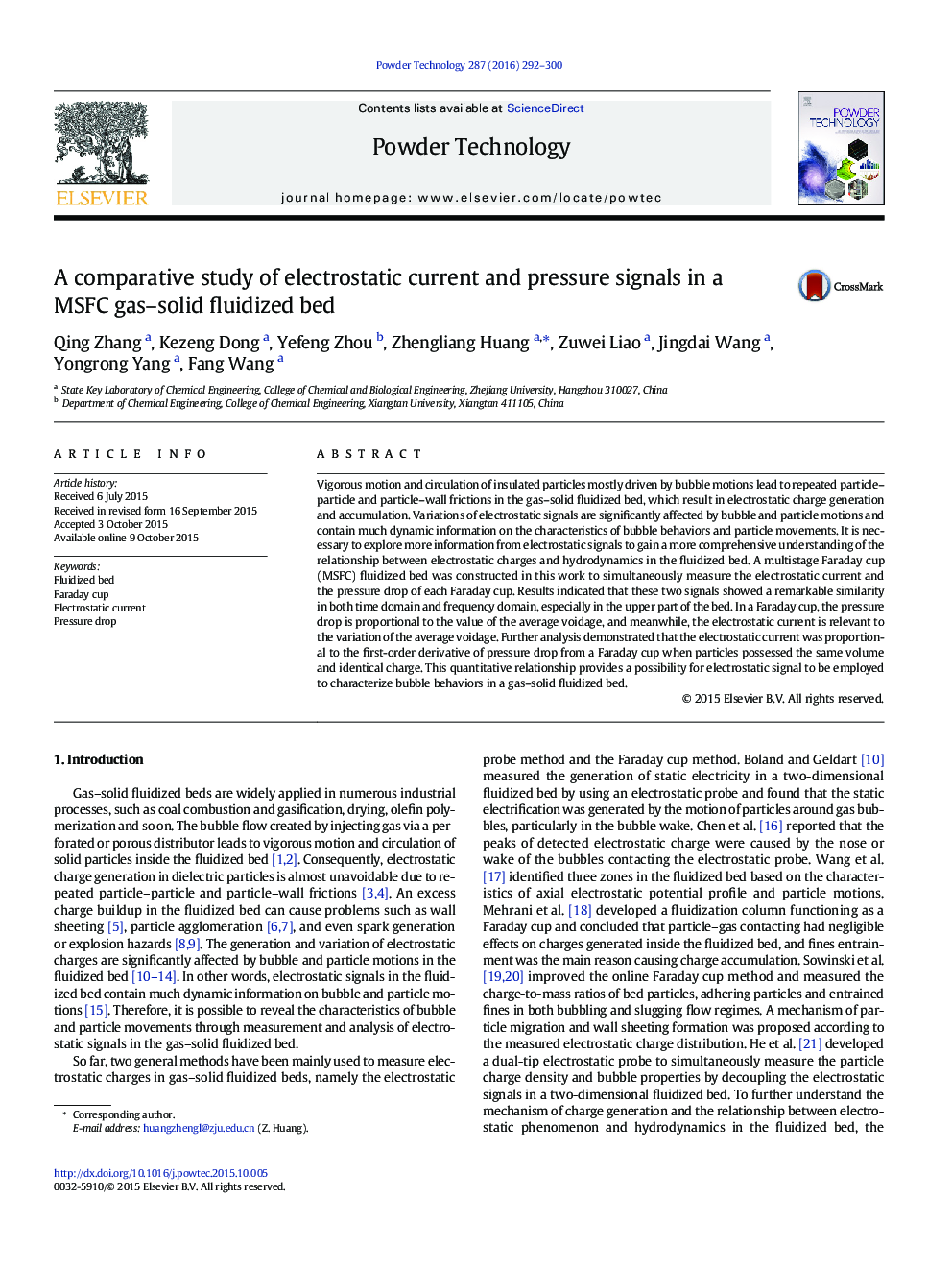| Article ID | Journal | Published Year | Pages | File Type |
|---|---|---|---|---|
| 235180 | Powder Technology | 2016 | 9 Pages |
•Currents were caused by charged particles entering or leaving a Faraday cup.•Current and pressure drop showed a remarkable similarity in the upper part of the bed.•A quantitative relation between current and pressure drop was proposed.
Vigorous motion and circulation of insulated particles mostly driven by bubble motions lead to repeated particle–particle and particle–wall frictions in the gas–solid fluidized bed, which result in electrostatic charge generation and accumulation. Variations of electrostatic signals are significantly affected by bubble and particle motions and contain much dynamic information on the characteristics of bubble behaviors and particle movements. It is necessary to explore more information from electrostatic signals to gain a more comprehensive understanding of the relationship between electrostatic charges and hydrodynamics in the fluidized bed. A multistage Faraday cup (MSFC) fluidized bed was constructed in this work to simultaneously measure the electrostatic current and the pressure drop of each Faraday cup. Results indicated that these two signals showed a remarkable similarity in both time domain and frequency domain, especially in the upper part of the bed. In a Faraday cup, the pressure drop is proportional to the value of the average voidage, and meanwhile, the electrostatic current is relevant to the variation of the average voidage. Further analysis demonstrated that the electrostatic current was proportional to the first-order derivative of pressure drop from a Faraday cup when particles possessed the same volume and identical charge. This quantitative relationship provides a possibility for electrostatic signal to be employed to characterize bubble behaviors in a gas–solid fluidized bed.
Graphical abstractFigure optionsDownload full-size imageDownload as PowerPoint slide
